Table of Contents
What is the best way to earn money today? Are you looking for effective methods to boost your income? In this article, we will explore the top 5 proven strategies that can help you achieve financial success. Read on to discover how these strategies can be your pathways to financial freedom.
1. Skyrocket Your Income with Affiliate Marketing
Affiliate marketing is one of the best ways to earn money, allowing you to leverage your online presence to generate income. By promoting products and services through unique affiliate links, you can earn commissions on every sale made through your referrals. This method is highly effective because it combines the power of content creation with strategic marketing, providing a passive income stream once set up correctly.
Many individuals and businesses have found affiliate marketing to be a lucrative opportunity. Whether you’re a blogger, influencer, or website owner, affiliate marketing can significantly boost your income. Let’s dive into the specifics of how it works, how to choose the right programs, and the best strategies to ensure your success.
How Affiliate Marketing Works
Affiliate marketing works by partnering with companies to promote their products or services. You sign up for affiliate programs and receive unique tracking links. When someone clicks on your link and makes a purchase, you earn a commission. This method is highly efficient, as it allows you to monetize your existing audience without creating products.
Understanding the mechanics of affiliate marketing is crucial for success. It involves selecting products that align with your niche and audience, creating compelling content, and using various marketing channels to drive traffic to your links. The key is to provide value to your audience while subtly promoting affiliate products.
Successful affiliate marketers focus on building trust with their audience. They provide honest reviews, helpful guides, and genuine recommendations. This approach not only enhances credibility but also increases conversion rates. By consistently delivering valuable content, you can turn affiliate marketing into a sustainable income stream.
Affiliate marketing also requires tracking and analyzing your efforts. Use tools to monitor clicks, conversions, and earnings. This data helps you refine your strategies and optimize your campaigns for better results. Remember, continuous improvement is the path to long-term success in affiliate marketing.
Choosing the Right Affiliate Programs
Selecting the right affiliate programs is essential for maximizing your earnings. Start by researching programs that offer high commissions and have a good reputation. Look for products and services that match your niche and audience interests. The more relevant the product, the higher the chances of conversion.
Consider joining reputable affiliate networks like Awin, ShareASale, or Commission Junction. These platforms offer a wide range of products and have established trust with affiliates. Additionally, explore direct affiliate programs from companies within your niche, as they often provide better commission rates and exclusive promotions.
Evaluate the support and resources provided by the affiliate program. Quality programs offer marketing materials, training, and dedicated affiliate managers to assist you. This support can be invaluable, especially if you’re new to affiliate marketing. A good program will equip you with the tools needed to succeed.
Read reviews and gather feedback from other affiliates before joining a program. This research can provide insights into the program’s reliability, payment schedules, and overall performance. Choosing the right affiliate programs is a critical step that can significantly impact your affiliate marketing success.
Effective Strategies for Promoting Affiliate Products
Promoting affiliate products effectively requires a strategic approach. Start by creating high-quality content that addresses your audience’s needs and interests. This content can be in the form of blog posts, videos, social media updates, or email newsletters. The goal is to provide value while integrating your affiliate links naturally.
One effective strategy is writing detailed product reviews. Share your personal experiences, highlight the benefits, and compare the product with alternatives. This approach builds trust and helps your audience make informed purchasing decisions. Include clear call-to-actions (CTAs) encouraging readers to click your affiliate links.
Another strategy is creating how-to guides and tutorials. These types of content are highly valuable as they offer practical solutions to your audience’s problems. By demonstrating how a product can solve an issue or improve a process, you increase the likelihood of conversions. Make sure to include your affiliate links throughout the guide.
Utilize social media platforms to reach a broader audience. Share your content, engage with your followers, and use hashtags to increase visibility. Social media can drive significant traffic to your affiliate links, especially if you consistently provide valuable and engaging content.
Email marketing is another powerful tool for promoting affiliate products. Build an email list of subscribers interested in your niche and send them regular updates, special offers, and exclusive content. Personalized recommendations in your emails can lead to higher conversion rates and increased affiliate earnings.
Benefits of Affiliate Marketing
Affiliate marketing offers numerous benefits, making it an attractive option for those looking to earn money online. One of the primary advantages is the potential for passive income. Once you create and publish your content, it can continue to generate commissions for months or even years with minimal ongoing effort.
Another benefit is the low startup cost. Unlike traditional businesses that require significant investment, affiliate marketing only requires a website or a platform to promote products. This low barrier to entry makes it accessible to anyone willing to put in the effort to create valuable content.
Affiliate marketing also provides flexibility and scalability. You can work from anywhere, choose your working hours, and scale your efforts as your audience grows. This flexibility allows you to maintain a work-life balance while steadily increasing your income.
Additionally, affiliate marketing enables you to diversify your income streams. By promoting a variety of products and services, you reduce your dependency on a single source of income. This diversification can provide financial stability and mitigate risks associated with market fluctuations.
Common Mistakes to Avoid in Affiliate Marketing
Avoiding common mistakes is crucial for success in affiliate marketing. One frequent error is promoting too many products at once. Focus on a few high-quality products that resonate with your audience instead of overwhelming them with numerous options. This approach ensures better engagement and higher conversion rates.
Another mistake is neglecting the importance of trust and transparency. Always disclose your affiliate relationships to your audience. Being upfront about your commissions builds trust and fosters a loyal following. Trust is a significant factor in successful affiliate marketing.
Failing to track and analyze your performance is another common pitfall. Use analytics tools to monitor your campaigns, understand your audience’s behavior, and identify what works best. This data-driven approach allows you to optimize your strategies and improve your results over time.
Lastly, avoid relying solely on affiliate income. Diversify your revenue streams by exploring other monetization methods such as sponsored content, digital products, or online courses. This diversification ensures financial stability and provides multiple avenues for growth.
2. Boost Earnings Through Email Marketing Campaigns
Email marketing is one of the best ways to earn money by engaging with your audience directly. This strategy allows you to send targeted messages to your subscribers, promoting products, sharing valuable content, and building relationships. With the right approach, email marketing can significantly boost your earnings and drive consistent revenue.
The key to successful email marketing lies in understanding your audience and providing them with relevant, valuable content. By creating personalized campaigns and utilizing effective strategies, you can maximize your results and grow your income. Let’s explore the fundamentals of email marketing and how to make the most of this powerful tool.
Email Marketing Recommendations
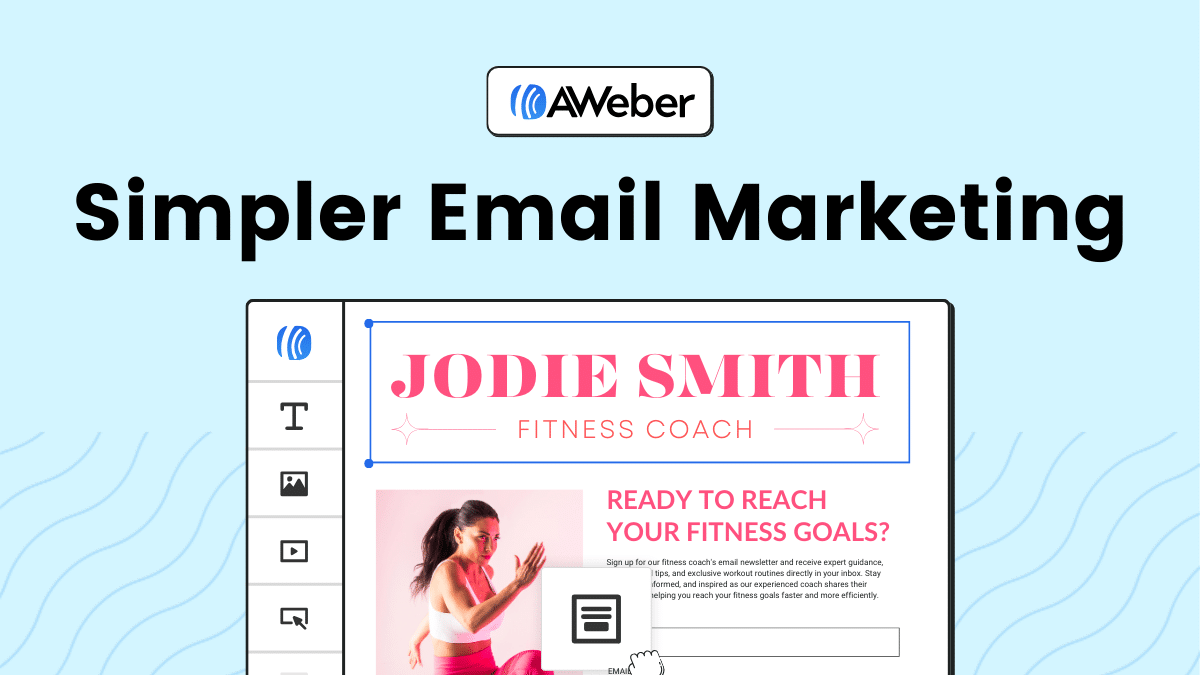 Aweber
| 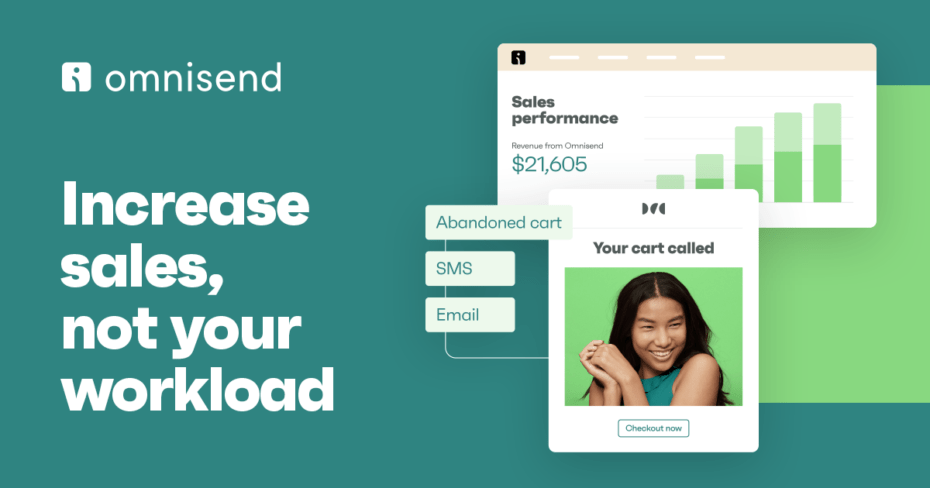 Omnisend
| 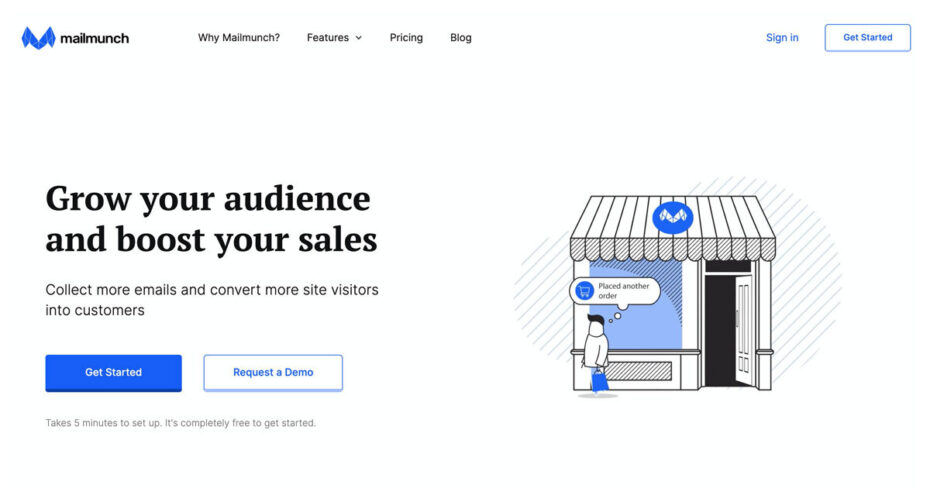 Mailmunch
|
Basics of Email Marketing
Email marketing involves sending emails to a list of subscribers who have opted to receive updates from you. The primary goal is to engage with your audience, build trust, and drive conversions. This can be achieved through newsletters, promotional emails, transactional emails, and more. Understanding these basics is crucial for a successful email marketing strategy.
To start, you need to build an email list. This list should consist of individuals interested in your niche or industry. You can collect email addresses through your website, social media, or events. The quality of your list is vital, as a highly engaged audience will lead to better results.
Creating engaging email content is another essential aspect. Your emails should be informative, relevant, and valuable to your subscribers. Use a friendly and conversational tone to connect with your audience. Including strong calls to action (CTAs) encourages readers to take the desired steps, such as making a purchase or visiting your website.
Consistency is key in email marketing. Regularly sending emails keeps your audience engaged and helps you stay top-of-mind. However, avoid overwhelming your subscribers with too many emails, as this can lead to high unsubscribe rates. Striking the right balance is essential for maintaining a healthy relationship with your audience.
Building a High-Quality Email List
A high-quality email list is the foundation of successful email marketing. To build such a list, focus on attracting subscribers who are genuinely interested in your content. Start by offering valuable incentives, such as free ebooks, exclusive discounts, or informative newsletters, to encourage sign-ups.
Utilize opt-in forms on your website and landing pages. These forms should be simple, user-friendly, and prominently displayed. Highlight the benefits of subscribing to your email list to entice visitors to join. Using multiple opt-in forms across your site can help capture more leads.
Segmenting your email list is another crucial step. By dividing your subscribers into groups based on their interests, behaviors, or demographics, you can send more targeted and relevant emails. This personalization leads to higher engagement rates and better overall performance.
Maintaining your email list’s health is also important. Regularly clean your list by removing inactive subscribers or those who haven’t engaged with your emails in a while. This practice ensures that your emails reach an active and interested audience, improving your campaign’s effectiveness.
Crafting Compelling Email Content
Creating compelling email content is essential for capturing your audience’s attention and driving conversions. Start with a captivating subject line that entices recipients to open your email. A well-crafted subject line should be concise, intriguing, and relevant to the email’s content.
Personalization is key in email content. Use your subscribers’ names and tailor the content to their preferences or past behaviors. Personalized emails feel more relevant and can significantly increase engagement rates. Additionally, segmenting your list allows for more precise targeting.
Your email’s body should be clear, concise, and visually appealing. Use a friendly and conversational tone to make your content more relatable. Incorporate images, videos, or infographics to make your emails visually engaging. Break up text with bullet points or headings to improve readability.
Strong calls to action (CTAs) are crucial for driving conversions. Whether you want your subscribers to make a purchase, sign up for an event, or read a blog post, your CTA should be clear and compelling. Place your CTA prominently within the email and use persuasive language to encourage action.
Analyzing and Optimizing Email Campaigns
Analyzing and optimizing your email campaigns is essential for continuous improvement. Start by tracking key metrics such as open rates, click-through rates (CTR), conversion rates, and unsubscribe rates. These metrics provide insights into your campaign’s performance and highlight areas for improvement.
A/B testing is a powerful method for optimization. Test different subject lines, email designs, CTAs, and content to see what resonates best with your audience. A/B testing helps you identify the most effective elements and refine your strategy for better results.
Use analytics tools to gain deeper insights into your subscribers’ behavior. Understanding how your audience interacts with your emails allows you to tailor future campaigns more effectively. For instance, if certain content types or topics perform better, focus on those in your upcoming emails.
Continuous learning and adaptation are key to success in email marketing. Stay updated with industry trends, experiment with new strategies, and regularly review your performance data. By consistently optimizing your campaigns, you can maximize your email marketing efforts and boost your earnings.
Tools and Platforms for Email Marketing
Choosing the right tools and platforms is crucial for effective email marketing. There are numerous options available, each with its own set of features and benefits. Popular email marketing platforms like Moosend, Constant Contact, and ConvertKit offer user-friendly interfaces and robust functionalities.
When selecting a platform, consider your specific needs and budget. Look for features such as automation, segmentation, analytics, and A/B testing. These tools can streamline your workflow and enhance your campaign’s effectiveness. Additionally, ensure that the platform you choose integrates well with your existing systems, such as your website or CRM.
Automation is a powerful feature that can save you time and improve your email marketing results. Automated workflows allow you to send personalized emails based on triggers such as sign-ups, purchases, or engagement levels. This personalization can lead to higher engagement and conversion rates.
Analytics and reporting are essential for tracking your campaign’s performance. Choose a platform that offers detailed insights into key metrics like open rates, CTR, and conversions. These insights help you make data-driven decisions and optimize your email marketing strategy for better results.
Common Pitfalls in Email Marketing
Avoiding common pitfalls in email marketing can significantly improve your campaign’s success. One frequent mistake is failing to segment your email list. Sending generic emails to your entire list can lead to low engagement and high unsubscribe rates. Instead, segment your list to send more targeted and relevant content.
Another pitfall is neglecting mobile optimization. A large percentage of email recipients open their emails on mobile devices. Ensure that your emails are mobile-friendly by using responsive design, concise content, and large, tappable buttons. Mobile optimization enhances the user experience and boosts engagement.
Overloading your emails with too much information is another common mistake. Keep your emails focused and to the point. Too much content can overwhelm your readers and dilute your message. Instead, use clear, concise language and focus on one main call to action per email.
Lastly, failing to monitor and analyze your campaign performance can hinder your progress. Regularly review your metrics and gather insights into what’s working and what’s not. Use this data to refine your strategy and continuously improve your email marketing efforts for better results.
3. Generate Revenue with Blogging
Blogging is one of the best ways to earn money, offering a platform to share your expertise, connect with an audience, and generate income. Whether you’re passionate about travel, technology, fashion, or any other niche, blogging provides endless opportunities for monetization. With dedication and the right strategies, you can turn your blog into a lucrative venture.
Starting a blog requires careful planning and execution. From choosing the right niche to creating valuable content and promoting your site, each step is crucial for success. Let’s explore the essential aspects of generating revenue with blogging, ensuring you have all the tools needed to thrive in this competitive field.
Blog Hosting Recommendations
 Hostgator
| 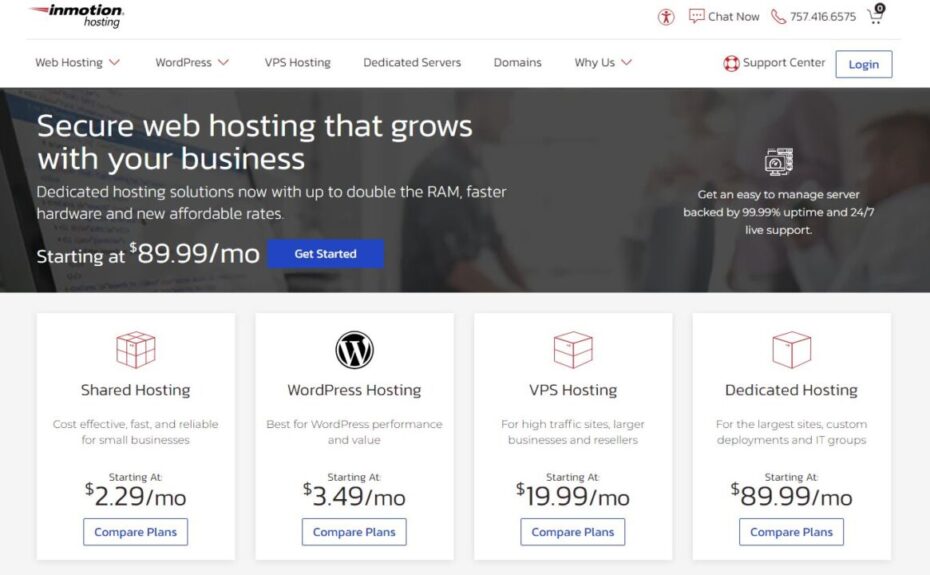 Inmotion
|  Hostinger
|
Starting a Blog from Scratch
Starting a blog from scratch involves several key steps, beginning with selecting a blogging platform. Popular options include WordPress, Blogger, and Wix, each offering unique features. WordPress is highly recommended due to its flexibility, extensive plugin library, and ease of use.
Once you’ve chosen a platform, the next step is to secure a domain name and hosting service. Your domain name should be memorable and reflect your blog’s content. Hosting services like Namecheap or WPengine provide reliable performance and customer support, ensuring your blog runs smoothly.
Designing your blog is an exciting process. Choose a theme that aligns with your niche and is visually appealing. Customize your blog to make it unique, but keep the design clean and user-friendly. An intuitive layout enhances the reader experience and encourages them to explore your content further.
Content creation is the heart of blogging. Start by planning a content calendar to ensure consistent posting. Aim to provide valuable, informative, and engaging content that addresses your audience’s needs. High-quality content establishes your authority in your niche and attracts more visitors to your blog.
Choosing a Profitable Niche
Choosing a profitable niche is crucial for blogging success. A niche is a specific topic or area of interest that you focus on in your blog. It’s essential to choose a niche that you’re passionate about and has the potential to attract a substantial audience. Popular niches include health and wellness, personal finance, technology, and lifestyle.
Conduct thorough research to identify niches with high demand and low competition. Use tools like Buzzsumo, Keyword Planner, and social media platforms to gauge the popularity of different topics. Look for niches where you can offer unique insights or a fresh perspective, as this can set your blog apart from others.
Consider the monetization potential of your chosen niche. Some niches have more opportunities for affiliate marketing, sponsored content, or selling digital products. Evaluate how you can generate revenue from your blog and ensure there’s a market for the products or services you plan to promote.
Identify your target audience and understand their needs and preferences. Creating reader personas can help you tailor your content to their interests and solve their problems. A well-defined target audience makes it easier to create relevant content that resonates with your readers and drives engagement.
Creating Engaging and SEO-Friendly Content
Creating engaging and SEO-friendly content is essential for attracting and retaining readers. Start with keyword research to identify terms your target audience is searching for. Use tools like Ahrefs, SEMrush, or Squirrly to find relevant keywords with good search volume and low competition.
Craft compelling headlines that grab attention and encourage clicks. Your headlines should be clear, concise, and include your primary keyword. A strong headline sets the tone for your content and can significantly impact your click-through rates.
Focus on providing valuable information in your blog posts. Address your readers’ pain points, answer their questions, and offer actionable advice. Use a conversational tone to make your content more relatable and engaging. Break up your text with subheadings, bullet points, and images to enhance readability.
Optimize your content for search engines by incorporating keywords naturally throughout your post. Avoid keyword stuffing, as it can harm your rankings and make your content less readable. Include internal and external links to provide additional value and improve your site’s SEO. Regularly update your content to keep it fresh and relevant.
Monetizing Your Blog
Monetizing your blog involves various strategies to generate income. One of the most popular methods is affiliate marketing. Promote products or services related to your niche and earn commissions on sales made through your referral links. Choose reputable affiliate programs and products that align with your audience’s interests.
Sponsored content is another effective way to monetize your blog. Collaborate with brands to create content that promotes their products or services. Ensure that sponsored posts are relevant and valuable to your readers. Transparency is key, so always disclose sponsored content to maintain trust with your audience.
Selling digital products, such as ebooks, courses, or printables, can be a lucrative income stream. Create products that address your audience’s needs and provide unique value. Digital products have low production costs and can generate passive income over time.
Display advertising is another option for monetization. Platforms like Adsterra allow you to place ads on your blog and earn revenue based on clicks or impressions. While advertising can be profitable, it’s essential to balance ad placements with user experience to avoid overwhelming your readers.
Promoting Your Blog to Increase Traffic
Promoting your blog is essential for driving traffic and growing your audience. Start by leveraging social media platforms. Share your blog posts on channels like Facebook, Twitter, Instagram, and LinkedIn. Engage with your followers, respond to comments, and participate in relevant groups or communities.
Guest blogging is another effective promotional strategy. Write high-quality posts for other blogs in your niche, including a link back to your site. Guest blogging exposes your content to a broader audience and can drive traffic to your blog. Additionally, it helps build your authority and credibility within your niche.
Utilize email marketing to keep your audience engaged and informed. Build an email list and send regular newsletters with updates, exclusive content, and promotions. Personalized emails can drive traffic to your blog and encourage repeat visits. Offer incentives, such as free downloads or special offers, to encourage sign-ups.
Collaborate with influencers or other bloggers in your niche. Partnerships can help you reach a wider audience and attract new readers. Consider hosting joint webinars, giveaways, or interviews to create valuable content and promote your blog. Building relationships with others in your niche can lead to long-term growth opportunities.
Blogging Mistakes to Avoid
Avoiding common blogging mistakes can significantly improve your chances of success. One frequent mistake is inconsistent posting. Regularly update your blog with fresh content to keep your audience engaged and attract new visitors. A consistent posting schedule helps build a loyal readership and improves your site’s SEO.
Neglecting SEO best practices can hinder your blog’s visibility. Ensure your content is optimized for search engines by conducting keyword research, using meta tags, and optimizing images. Ignoring SEO can result in lower search rankings and reduced traffic to your blog.
Another mistake is focusing solely on monetization. While generating revenue is important, prioritizing your audience’s needs and providing value should come first. Authentic, helpful content builds trust and encourages long-term readership. Overly promotional content can drive readers away.
Lastly, failing to engage with your audience can limit your blog’s growth. Respond to comments, encourage discussions, and build a community around your blog. Engaging with your readers fosters loyalty and creates a supportive environment where your blog can thrive.
4. Achieve Success with Dropshipping Business
Dropshipping is one of the best ways to earn money online, offering a low-risk, high-reward opportunity for aspiring entrepreneurs. Unlike traditional retail models, dropshipping allows you to sell products without holding inventory, reducing upfront costs and operational complexities. By partnering with suppliers who handle storage and shipping, you can focus on marketing and sales.
The appeal of dropshipping lies in its simplicity and flexibility. You can run your business from anywhere, scale quickly, and offer a wide range of products. To achieve success in dropshipping, it’s essential to understand the model thoroughly and implement effective strategies for product selection, store setup, marketing, and customer service.
Dropshipping Sites Recommendations
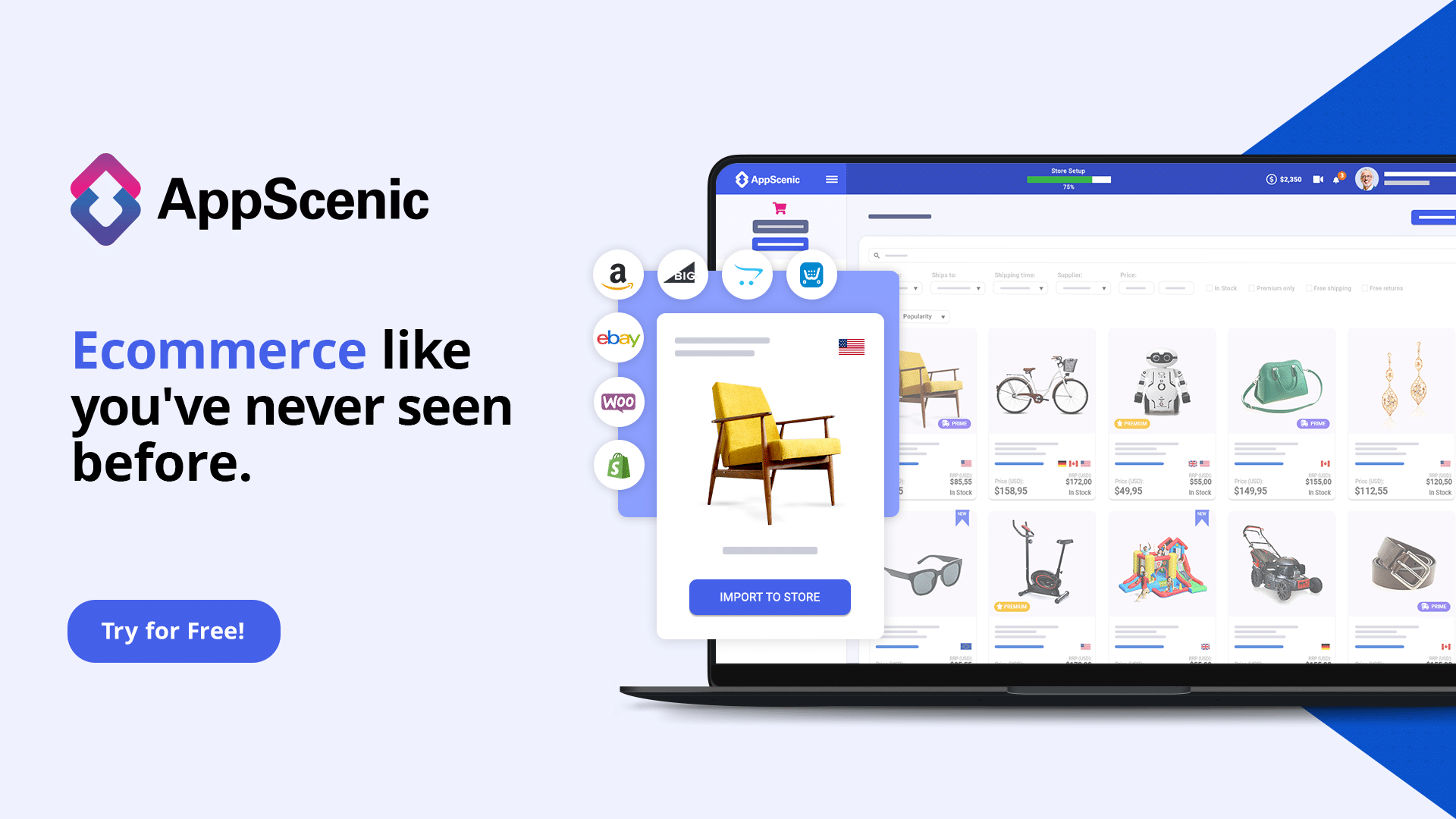 Appscenic
| 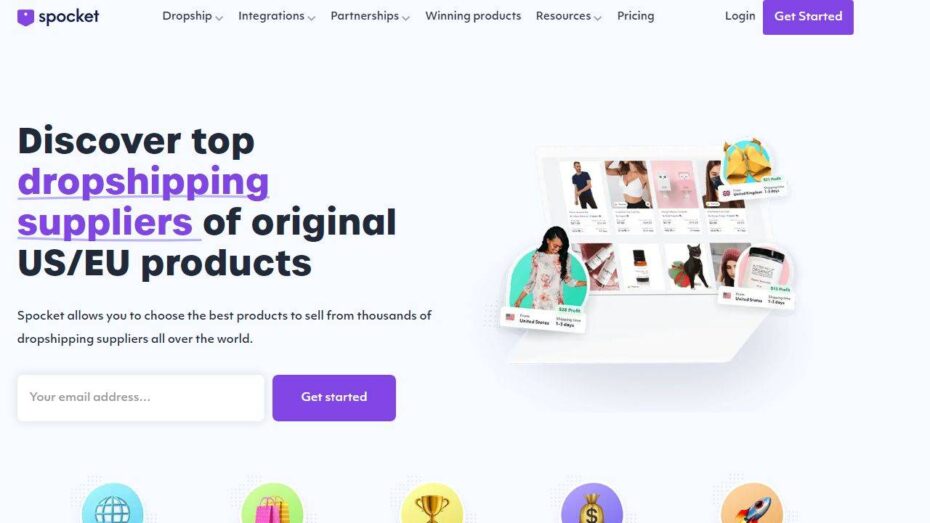 Spocket
|
Understanding Dropshipping Model
The dropshipping model involves three key players: the supplier, the retailer (you), and the customer. When a customer places an order on your online store, the supplier fulfills the order and ships the product directly to the customer. This eliminates the need for you to manage inventory, making it a highly efficient business model.
One of the main advantages of dropshipping is the low startup cost. You don’t need to invest in inventory upfront, reducing financial risk. Additionally, you can offer a wide variety of products without worrying about storage space. This flexibility allows you to test different products and niches without significant financial commitments.
To succeed in dropshipping, it’s crucial to choose reliable suppliers. Look for suppliers with a track record of timely deliveries and high-quality products. Establishing a strong relationship with your suppliers ensures smooth operations and a positive customer experience. Researching and vetting suppliers thoroughly can prevent potential issues down the line.
Dropshipping also offers the advantage of scalability. As your business grows, you can easily add new products and expand into new markets. The ability to scale quickly without the constraints of inventory management makes dropshipping an attractive option for entrepreneurs looking to grow their business rapidly.
Selecting Profitable Products for Dropshipping
Choosing the right products to sell is critical for the success of your dropshipping business. Start by researching market trends and identifying products with high demand and low competition. Tools like Google Trends, social media, and market research reports can provide valuable insights into popular products and emerging trends.
Consider focusing on niche markets. Niche products often have less competition and a more targeted audience, increasing your chances of success. For example, instead of selling general fitness equipment, you could specialize in yoga accessories or home workout gear. Specializing allows you to cater to a specific audience and build a loyal customer base.
Evaluate the profitability of potential products. Calculate the profit margins by comparing the supplier’s price with your selling price. Ensure that the products you choose offer a reasonable profit margin after accounting for marketing and operational costs. High-profit margins are essential for sustaining and growing your dropshipping business.
Quality is crucial when selecting products. Ensure that the products you choose meet high standards and have positive reviews. Selling low-quality products can lead to customer dissatisfaction and harm your brand’s reputation. Partnering with reputable suppliers who provide quality products is essential for building trust with your customers.
Setting Up Your Online Store
Setting up your online store is a crucial step in your dropshipping journey. Start by choosing an e-commerce platform that suits your needs. Popular platforms like Shopify, WooCommerce, and BigCommerce offer user-friendly interfaces and extensive features to help you build and manage your store effectively.
Design your store with a clean and professional look. Your website should be easy to navigate, with a clear layout that highlights your products. Use high-quality images and detailed descriptions to showcase your products effectively. A visually appealing and informative store enhances the shopping experience and encourages conversions.
Implement essential features such as a secure payment gateway, easy checkout process, and responsive design. Ensuring your website is mobile-friendly is crucial, as many customers shop using their mobile devices. A smooth and secure shopping experience builds trust and increases the likelihood of repeat purchases.
Optimize your store for search engines. Use relevant keywords in your product descriptions, meta tags, and URLs to improve your search engine rankings. High visibility on search engines drives organic traffic to your store, increasing your chances of making sales. SEO is a powerful tool for attracting potential customers without relying solely on paid advertising.
Marketing and Driving Traffic to Your Store
Effective marketing is essential for driving traffic to your dropshipping store and generating sales. Start with social media marketing to reach a broad audience. Platforms like Facebook, Instagram, and Pinterest are excellent for promoting your products and engaging with potential customers. Share engaging content, run ads, and interact with your followers to build a strong social media presence.
Content marketing is another powerful strategy. Create blog posts, videos, and guides related to your niche to attract and educate your audience. Providing valuable content establishes your authority and drives organic traffic to your store. Include links to your products within your content to encourage conversions.
Email marketing is an effective way to nurture leads and drive repeat business. Build an email list of subscribers interested in your niche and send them regular updates, promotions, and exclusive offers. Personalized email campaigns can increase customer loyalty and boost your sales.
Influencer marketing can also be beneficial. Partner with influencers in your niche to promote your products to their followers. Influencers have established trust with their audience, and their endorsements can drive significant traffic and sales to your store. Choose influencers whose audience aligns with your target market for the best results.
Managing Orders and Customer Service
Efficient order management is crucial for a smooth dropshipping operation. Use automation tools to streamline order processing and tracking. Platforms like Oberlo and Dropified integrate with your e-commerce store, automating the order fulfillment process and reducing manual work. Automation ensures timely and accurate order processing, enhancing customer satisfaction.
Providing excellent customer service is essential for building a loyal customer base. Respond promptly to customer inquiries and address any issues or concerns they may have. Offering multiple communication channels, such as email, live chat, and social media, ensures that customers can reach you easily. Good customer service can turn a one-time buyer into a repeat customer.
Implement a clear and fair return policy. While dropshipping, you rely on your suppliers for product quality and shipping. Having a well-defined return policy protects your business and provides reassurance to your customers. Make the return process as simple as possible to maintain a positive customer experience.
Monitor and analyze your performance regularly. Use analytics tools to track key metrics like sales, customer behavior, and traffic sources. Analyzing this data helps you identify trends, optimize your marketing strategies, and improve your overall operations. Continuous improvement is vital for the long-term success of your dropshipping business.
Common Challenges in Dropshipping and How to Overcome Them
Dropshipping presents several challenges, but understanding and addressing them can help you succeed. One common issue is supplier reliability. Unreliable suppliers can lead to delayed shipments, low-quality products, and unhappy customers. Thoroughly vet your suppliers and maintain strong communication to mitigate these risks.
Managing inventory and stock levels can be challenging. Since you don’t control inventory, you may face stockouts or overstock issues. Use inventory management tools to monitor stock levels and ensure timely restocking. Establishing strong relationships with your suppliers can also help you stay informed about inventory changes.
Handling customer expectations is another challenge. Customers may have high expectations for shipping times and product quality. Clearly communicate shipping times and provide regular updates on order status. Setting realistic expectations helps prevent dissatisfaction and builds trust with your customers.
Competition in dropshipping can be intense. To stand out, focus on providing exceptional customer service, high-quality products, and a unique brand identity. Continuously innovate and adapt to market trends to stay ahead of your competitors. Building a strong brand and loyal customer base is key to long-term success in dropshipping.
5. Maximize Profits with Freelancing
Freelancing is one of the best ways to earn money while enjoying the flexibility to work on your own terms. Whether you’re a writer, designer, programmer, or consultant, freelancing offers numerous opportunities to monetize your skills. To maximize your profits, it’s essential to find the right opportunities, build a strong portfolio, network effectively, and manage your finances wisely.
The key to successful freelancing lies in understanding the market, showcasing your expertise, and continuously improving your skills. With the right strategies, you can build a thriving freelance career that not only meets your financial goals but also provides personal satisfaction and growth.
Finding the Right Freelance Opportunities
Finding the right freelance opportunities is crucial for maximizing your earnings. Start by identifying your skills and areas of expertise. Focus on niches where you can offer unique value and have a competitive edge. Platforms like Upwork, Freelancer, and Fiverr are excellent places to start, as they connect freelancers with clients looking for specific skills.
Create a compelling profile on these platforms that highlights your skills, experience, and past projects. A well-crafted profile can attract potential clients and increase your chances of landing high-paying gigs. Include a professional photo, a detailed bio, and relevant samples of your work to showcase your abilities.
Networking is another powerful way to find freelance opportunities. Join industry-related groups on social media, attend webinars, and participate in online forums. Building relationships with other professionals in your field can lead to referrals and job opportunities that aren’t advertised on freelance platforms.
Don’t overlook local opportunities. Reach out to small businesses, startups, and non-profit organizations in your area. Many local businesses prefer working with freelancers who understand their market and can provide personalized services. Building a local client base can lead to long-term, repeat business.
Building a Strong Portfolio
A strong portfolio is essential for attracting high-paying freelance clients. Start by compiling your best work that showcases your skills and expertise. Include a variety of projects that demonstrate your versatility and ability to handle different types of assignments. Quality is more important than quantity, so focus on including your most impressive work.
Your portfolio should be well-organized and easy to navigate. Use a clean, professional design that highlights your work without distractions. Provide detailed descriptions of each project, including the client’s requirements, your approach, and the results achieved. This context helps potential clients understand the value you can bring to their projects.
Regularly update your portfolio to reflect your latest work and achievements. As you complete new projects, add them to your portfolio to keep it current and relevant. An up-to-date portfolio shows that you are active in your field and continuously improving your skills.
Consider creating a personal website to host your portfolio. A website gives you complete control over the presentation of your work and allows you to include additional information such as testimonials, case studies, and a blog. A professional website enhances your credibility and makes it easier for potential clients to find and contact you.
Effective Networking Strategies for Freelancers
Effective networking is a cornerstone of a successful freelance career. Start by building a strong online presence on social media platforms like LinkedIn, Twitter, and Instagram. Share your work, engage with industry leaders, and participate in relevant discussions. Consistent online activity helps you stay visible and build a professional reputation.
Join professional associations and online communities related to your field. These groups provide valuable networking opportunities, industry insights, and support from fellow freelancers. Actively participate in discussions, share your expertise, and offer help to others. Being a valuable member of the community can lead to referrals and job offers.
Attend industry events, conferences, and meetups. These events are excellent opportunities to connect with potential clients and other professionals in your field. Prepare a concise elevator pitch that clearly communicates your skills and the value you offer. Collect business cards and follow up with new contacts after the event to nurture these connections.
Leverage your existing network for referrals. Let friends, family, and former colleagues know about your freelance services and ask them to spread the word. Personal recommendations are highly effective in gaining new clients, as people are more likely to trust referrals from someone they know.
Setting Competitive Rates and Managing Finances
Setting competitive rates is essential for maximizing your freelance earnings. Research the average rates in your industry and region to understand what other freelancers with similar skills and experience are charging. This information helps you set rates that are competitive yet reflective of your expertise and the value you provide.
Consider different pricing models such as hourly rates, project-based fees, or retainer agreements. Each model has its advantages, depending on the nature of the work and your preferences. Clearly communicate your rates and payment terms to clients before starting a project to avoid misunderstandings and ensure timely payments.
Managing your finances effectively is crucial for a sustainable freelance career. Keep track of your income and expenses using accounting software or spreadsheets. Set aside a portion of your earnings for taxes and save regularly to build a financial cushion for slow periods. Proper financial management ensures you stay financially stable and prepared for any uncertainties.
Invoice promptly and follow up on late payments. Create professional invoices that include all necessary details and send them as soon as you complete a project. Establish clear payment terms and follow up with clients who delay payments. Efficient invoicing and payment tracking help maintain a steady cash flow.
Tips for Maintaining Work-Life Balance as a Freelancer
Maintaining a healthy work-life balance is essential for long-term success and personal well-being. Set clear boundaries between work and personal time. Designate a specific workspace and establish regular working hours. Communicate your availability to clients to manage their expectations and avoid burnout.
Prioritize tasks and manage your time effectively. Use tools like to-do lists, calendars, and project management software to stay organized and on track. Break down large projects into smaller tasks and set deadlines to ensure steady progress. Effective time management allows you to complete work efficiently and free up time for personal activities.
Take regular breaks and make time for self-care. Working long hours without breaks can lead to stress and decreased productivity. Incorporate short breaks into your schedule to recharge and maintain focus. Engage in activities you enjoy, such as hobbies, exercise, or spending time with loved ones, to maintain a balanced and fulfilling life.
Learn to say no to projects that don’t align with your goals or capacity. Overcommitting can lead to poor-quality work and increased stress. Evaluate each opportunity carefully and prioritize projects that offer the most value and align with your expertise. Setting realistic limits helps you maintain high standards and a manageable workload.
Avoiding Common Freelancing Pitfalls
Avoiding common freelancing pitfalls can significantly enhance your career. One common mistake is underestimating the importance of contracts. Always use a written agreement that outlines the scope of work, deadlines, payment terms, and other essential details. A clear contract protects both you and your client and helps prevent disputes.
Another pitfall is failing to set boundaries with clients. Establish clear communication guidelines and stick to your working hours. While flexibility is one of the benefits of freelancing, it’s important to maintain a work-life balance and avoid being available 24/7. Setting boundaries helps you manage client expectations and maintain your well-being.
Neglecting professional development can hinder your progress. Continuously update your skills and stay informed about industry trends. Attend workshops, take online courses, and read industry publications to enhance your expertise. Investing in your professional growth ensures you remain competitive and can offer the best services to your clients.
Lastly, avoid relying on a single client for the majority of your income. Diversify your client base to reduce financial risk and create a more stable income stream. Working with multiple clients also provides a broader range of experiences and opportunities for growth, enhancing your overall freelance career.













